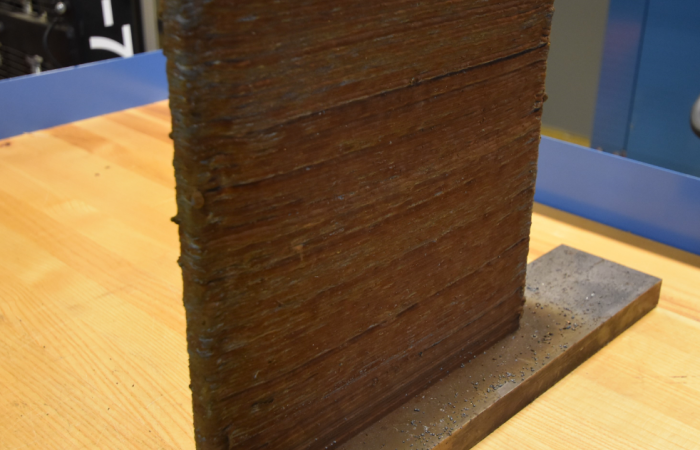A novel additive manufacturing method developed by researchers at Oak Ridge National Laboratory could be a promising alternative for low-cost, high-quality production of large-scale metal parts with less material waste. Researchers printed thin metal walls using a closed-loop, feedback-controlled technique to provide uniform flat beads and layers at a desired height. The system automatically regulates the printing process, creating stable properties within the metal deposit and producing a high-quality build throughout the part. “We achieved a precise geometry for the components by using real-time feedback sensors to correct for abnormalities,” ORNL’s Andrzej Nycz said. “Because metal printed walls represent the basic building blocks of parts manufactured with big area additive manufacturing, we expect the same stable properties to hold for parts printed with complex geometries.” The large-scale metal additive manufacturing method deposits materials at high rates, which allows for multiple metal feedstocks. The team’s results were published in Applied Sciences.
Topic:
Media Contact




